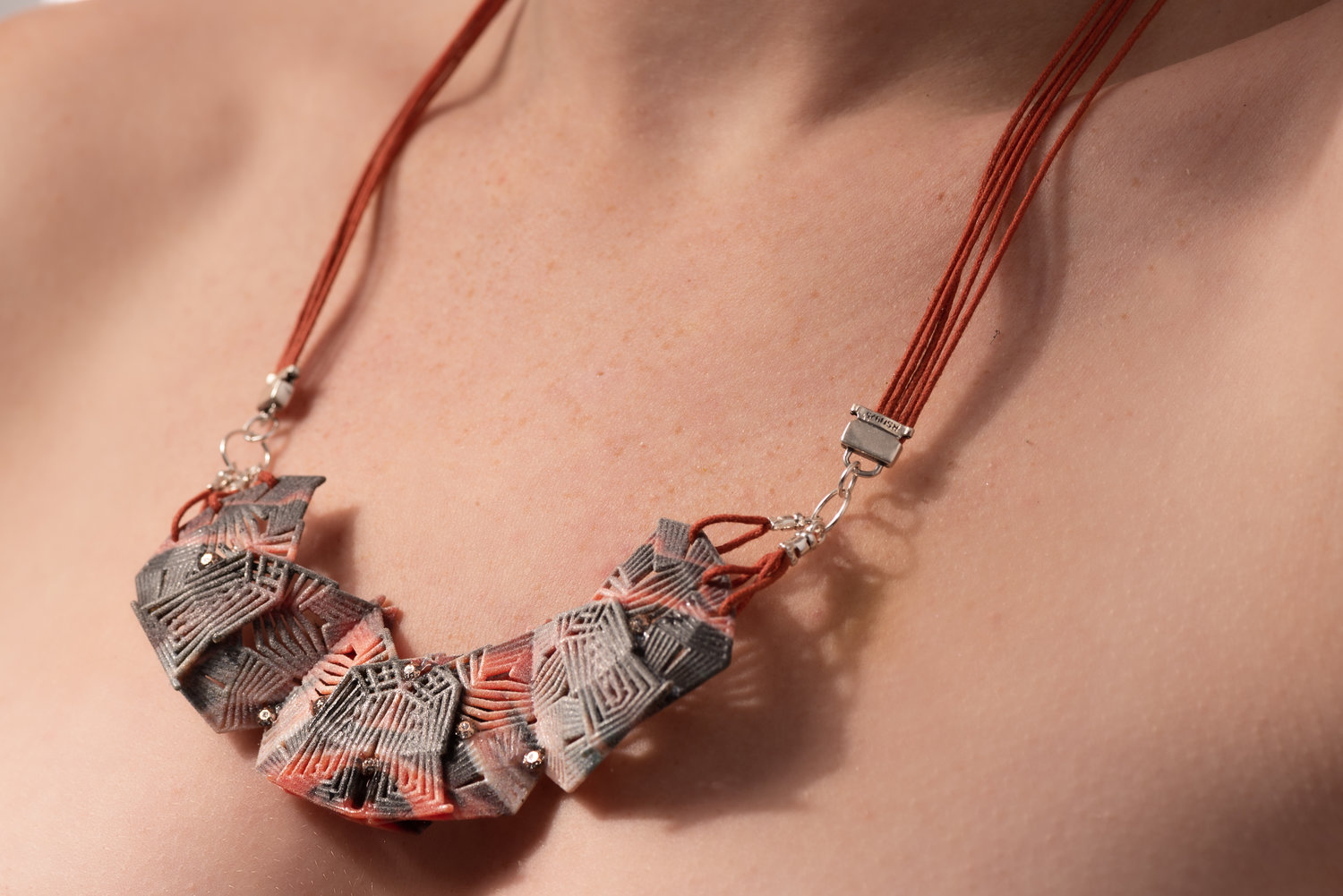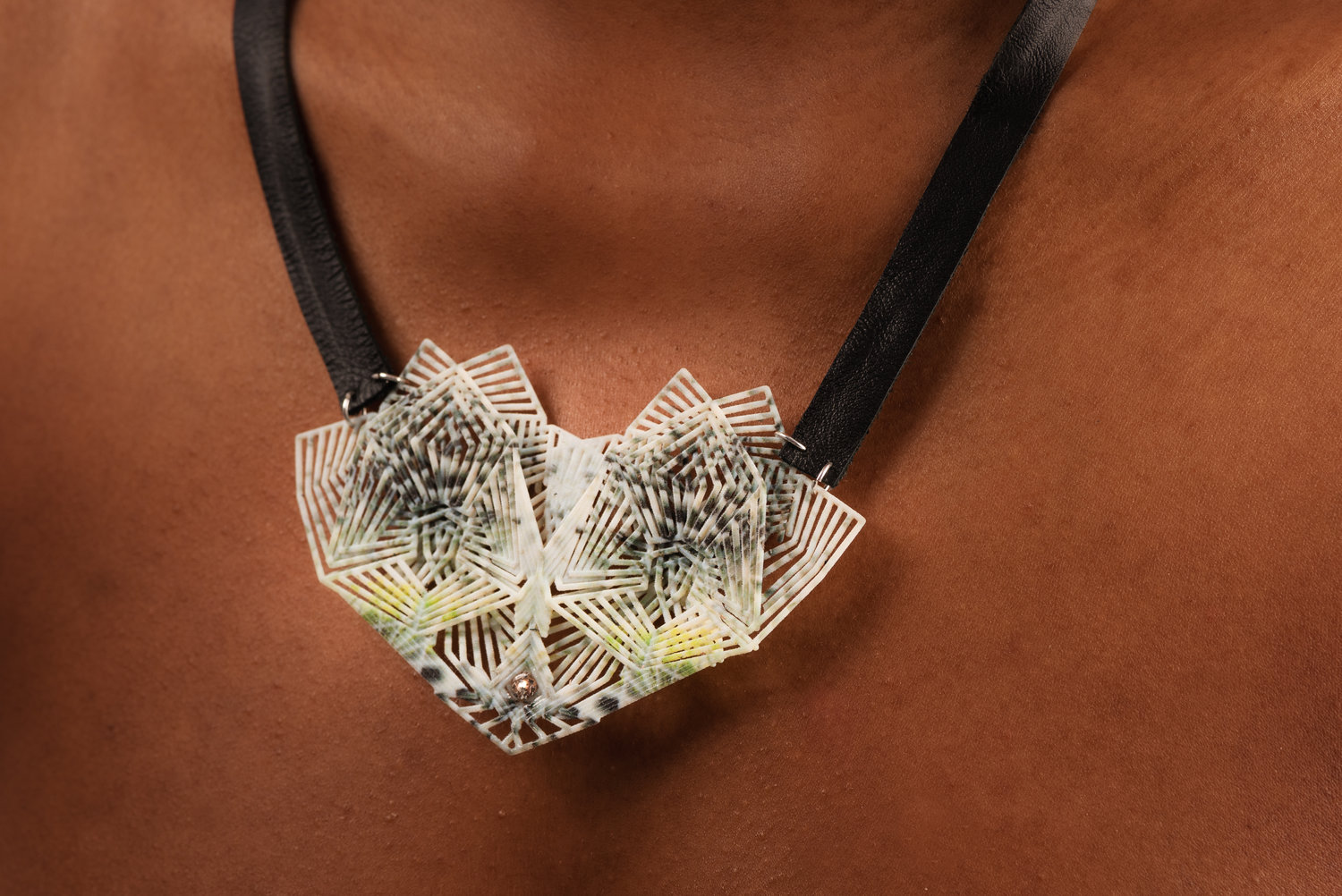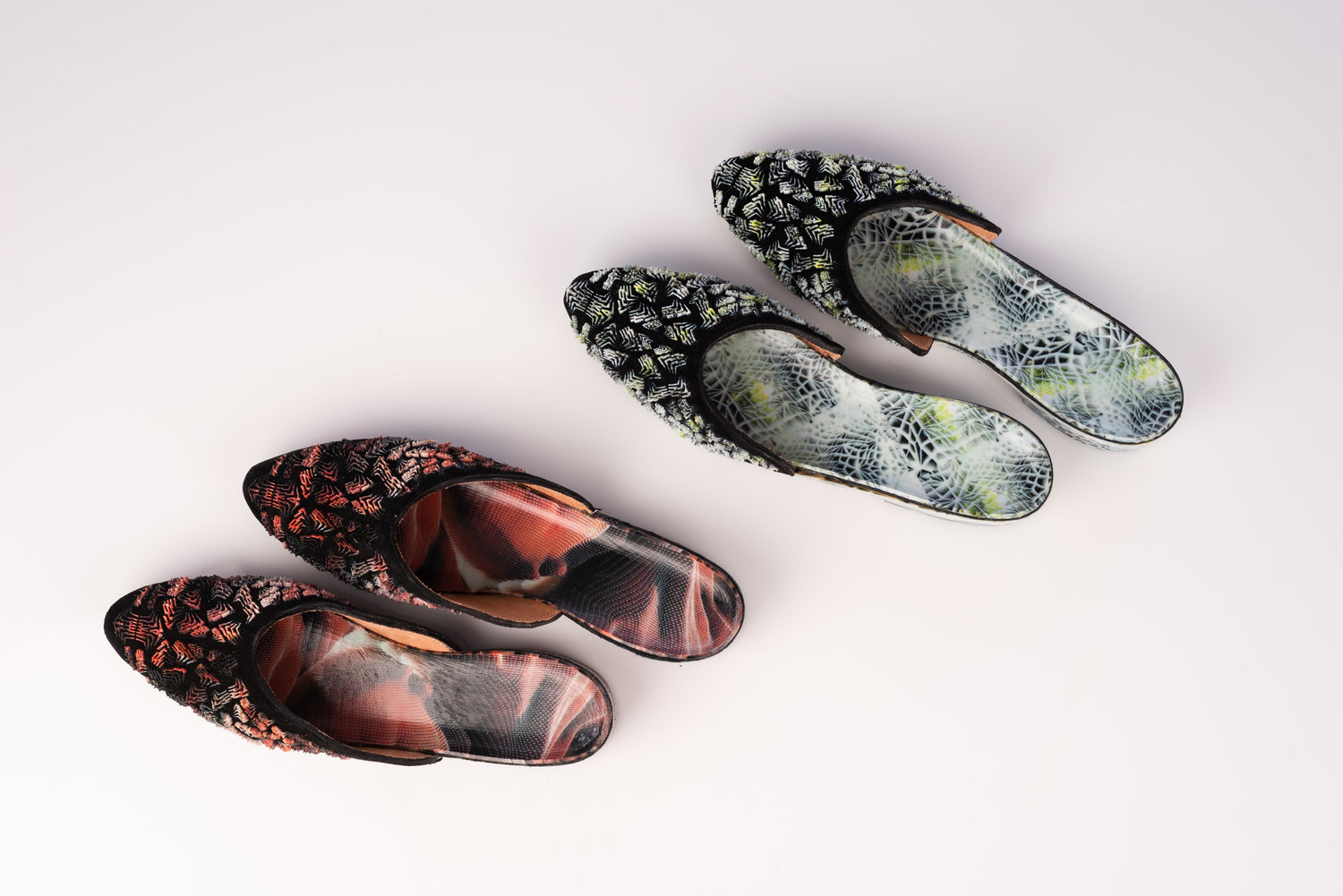Having showcased her shoe designs previously using Stratasys 3D Printers, up-and-coming fashion designer Ganit Goldstein has once again gone to Stratasys for her new Shifted Craft fashion series.
At the Milan Design Week exhibiting under the Israeli Pavilion, Goldstein debuted her experimental collection consisting – 7 pieces of 3D printed jewelry pieces (with Swarovski crystals) and two 3D printed pair of shoes. The collection supported by Stratasys, also showcased an industry first in that the shoes were 3D printed directly onto the leather.

Billing herself as a designer of the new technology era, Goldstein frequently takes a hybrid approach to make her seamless and stylish collections, by fusing 3D scanning, modeling, and printing with more traditional garment making practices.
Shifted Craft highlighted Goldstein’s learning of the traditional Japanese yarn and fabric dye technique called “ikat” at the Tokyo University of the Arts, and brought out the relationship between the body, form, and technology.
After the use of 3D scanning and parametric modeling software, Goldstein then 3D printed the final pieces using the multi-material and multi-color J750 3D printer in partnership with Stratasys’s Art, Design and Fashion department. Swarovski crystals were then added for the shine.
“I wanted to make the entire collection accessible and ‘ready-to-wear’, in order to show the real potential of 3D printing. Certainly, with regards to the two pairs of shoes in the collection, we are breaking new ground for using such methods to create wearable shoes. I was able to print directly onto leather – an entirely new feature for 3D printing technology.”
The J750 printer allowed Goldstein to produce high-quality test prints with intricate complexities, including scaled parts that were sometimes as small as a single millimeter in thickness.
“Stratasys’ advanced 3D printing technology provides me with the unrestricted ability to print my designs in any color, form, and complexity. This collection was designed to shatter traditional limitations, by using the unique capabilities of 3D printing to innovate fashion design as we know it,” Goldstein explained.

“Ganit lawfully and rigorously seeks to analyze and express the specific dimensions and qualities of the Japanese Ikat craft with use of parametric design, the containment within the borders of 2.5 dimension, while the technology enables full 3D modeling is an interesting one,” said Naomi Kaempfer, the Creative Director of Art, Design and Fashion at Stratasys.
For the shoes, Goldstein was able to digital manipulate the fabric’s physical properties by relying on digitally-created materials. With the full-color capabilities of the J750, traditional methods of textile fabrication such as molds or tools could be overlooked by rapidly 3D printing the fabric directly and enabled full control over customization, design, and geometry.

“Stratasys is focused on promoting and researching the extents of 3D textile design and applications. With new advances made in printing directly onto textiles, we are entering a new era of fashion design. We are committed to exploring innovations with our collaborators.”
Source: creatz3d.com.sg





